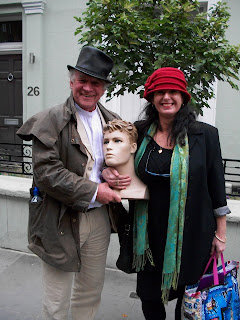
Ofili has built an international reputation with his works that bridge the sacred and the profane, popular culture and beliefs. His exuberant paintings are renowned for their rich layering and inventive use of media, including balls of elephant dung that punctuate the canvas and support them at their base, as well as glitter, resin, map pins and magazine cut-outs.
Ofili's early works draw on a wide range of influences, from Zimbabwean cave painting to blaxploitation movies, fusing comic book heroes and icons of funk and hip-hop. For the first time, these celebrated paintings are presented alongside current developments in his practice following his move to Trinidad in 2005. While adopting a simplified colour palette and pared-down forms, his recent works continue to draw on diverse sources of inspiration, and are full of references to sensual and Biblical themes as well as explore Tri nidad’s landscape and mythology.
nidad’s landscape and mythology.



















